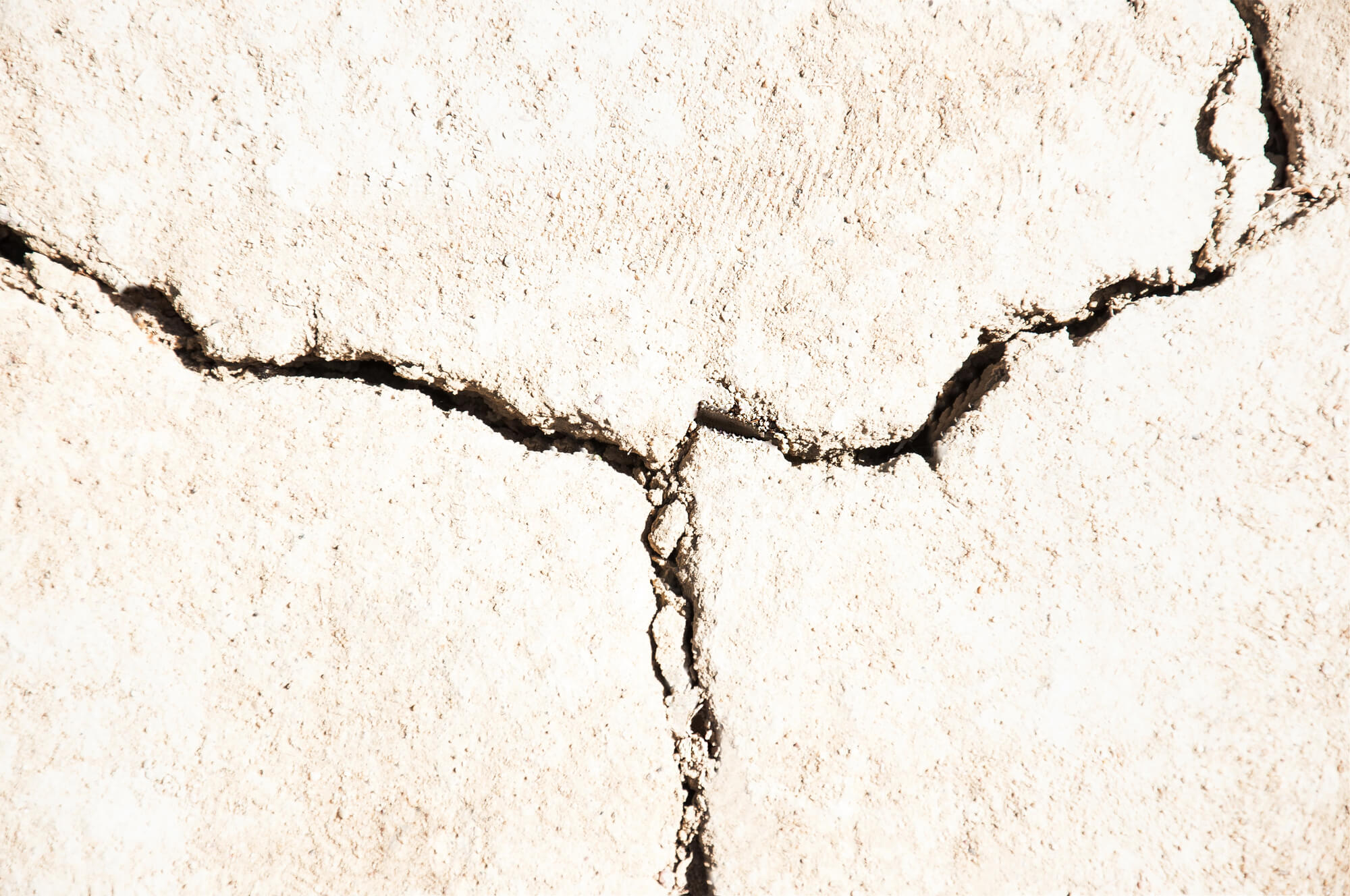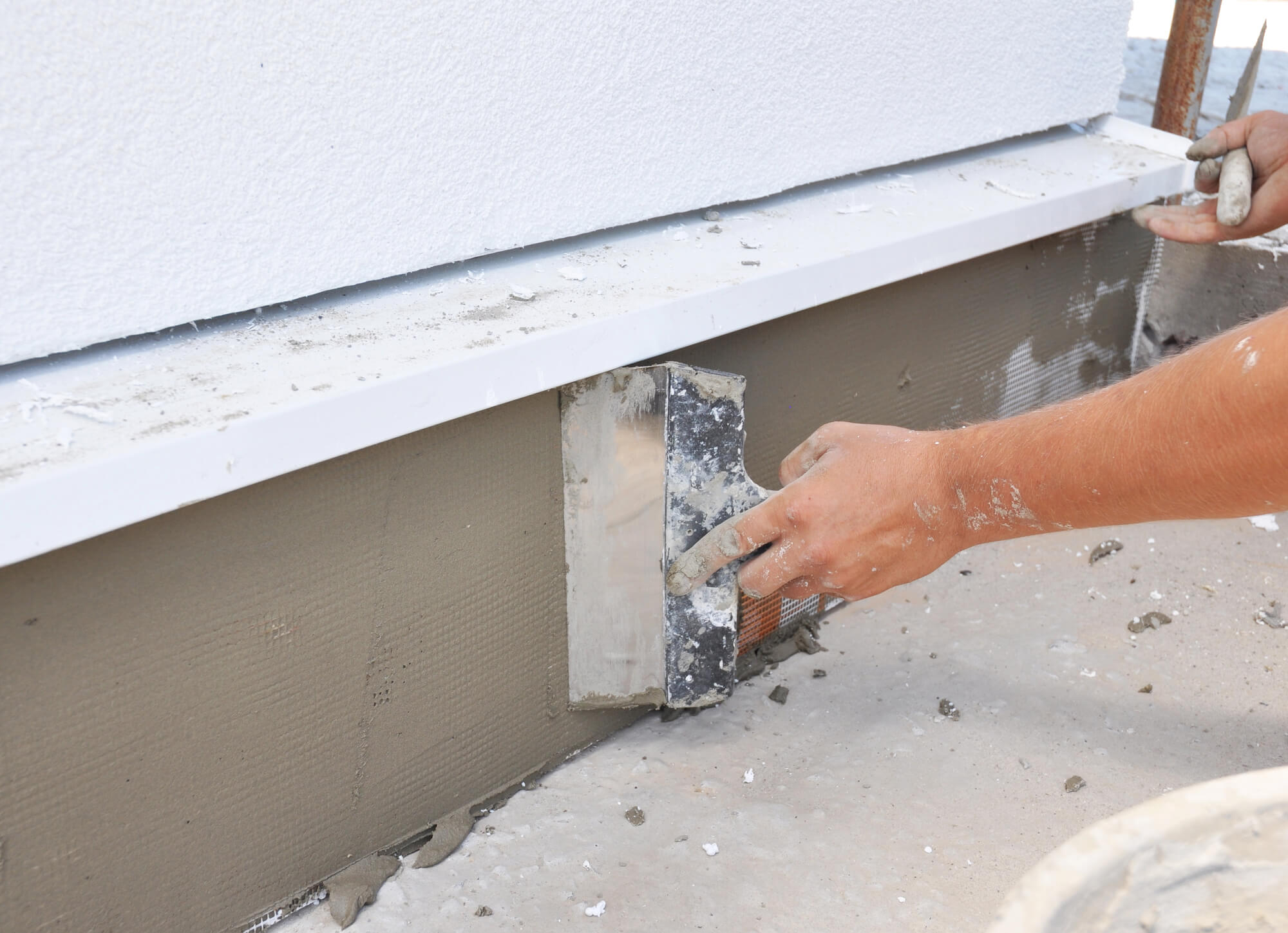Cracks in your home’s foundation can be alarming. Whether you’re looking at a jagged line running across a basement wall or spotting a hairline fissure along a slab, the first question on your mind is probably: “Is this serious?”
To help you answer that question, we’ve created this handy guide about the differences between structural and non-structural foundation cracks.
Some cracks are harmless cosmetic flaws that come from normal settling or temperature changes. Others could indicate serious underlying problems, like uneven soil movement or water infiltration, that threaten the structural integrity of your home.
Keep reading and learn more about the types of foundation cracks, what causes them, how to spot the warning signs, and when to call in a foundation repair specialist.
What Are Foundation Cracks?
Foundation cracks can form in any home, whether you have a poured concrete slab, a full basement, or even pier-and-beam construction. In San Antonio, Texas, most homes are built on either concrete slab foundations or basement foundations, both of which are especially prone to cracking due to soil movement, moisture fluctuations, and our region’s clay-heavy subsoil.
However, other foundation types like crawl space or pier-and-beam can also show signs of cracking, typically in walls, ceilings, or near support beams, when settlement or structural issues are present.
Cracks can appear in a variety of forms: hairline fractures in drywall, jagged stair-step cracks along masonry walls, or wide horizontal wall cracks in concrete basement walls. Each type may signal something different.
Generally, cracks are categorized as either:
- Structural cracks: Indicate an issue with your home’s stability and soil bearing, often requiring immediate repair.
- Non-structural cracks: Typically, only cosmetic cracks that may not affect the safety of your home, but are still worth monitoring.
Knowing which is which is essential for homeowners trying to protect their property’s value, safety, and long-term durability.
What Are Non-Structural Foundation Cracks?
Non-structural cracks, while not dangerous to your home’s stability, are still important to keep an eye on. These cracks are most often cosmetic and caused by:
- Concrete shrinkage as it cures
- Minor thermal movements from temperature fluctuations
- Normal foundation settling
Common types of non-structural cracks:
- Shrinkage cracks: Hairline cracks that form as concrete cures and loses moisture content.
- Vertical cracks: Often a result of minor settlement or drying, especially in poured concrete walls.
- Surface-level wall or floor cracks: May appear in drywall or along the base of the slab without any change in elevation or separation.
Non-structural cracks may also form in response to seasonal changes, particularly in regions with expansive clay soil like San Antonio. Though they may not compromise the structural integrity of your home, they can allow moisture infiltration, pest infestations, or mold and mildew growth, so sealing and monitoring them is still recommended to prevent more severe issues.
What Are Structural Foundation Cracks?
Structural cracks are typically caused by changes in the foundation’s load-bearing ability or the result of external stress factors like differential settlement, expansive soil, frost heave, or poor construction practices.
These cracks compromise the structural integrity of your home and can indicate deeper problems, such as:
- Foundation slab movement
- Load-bearing wall failure
- Bowing concrete walls
- Uneven foundation settlement
- Water damage to the foundation
Signs of structural cracks
- Horizontal cracks, especially in basement walls
- Diagonal or stair-step cracks in brick or masonry
- Cracks wider than 1/4 inch
- Cracks accompanied by water infiltration, mold, or pest infestation
- Visible interior and exterior cracked walls
These cracks are more than just cosmetic, as they can compromise your home’s structural integrity, cause bowing walls, and signal that your home’s support system is failing. Immediate foundation crack inspection by a residential structural engineer or foundation repair contractor is highly recommended.
Common Causes of Foundation Cracking
Foundation cracks—structural or non-structural—can stem from a variety of environmental and mechanical factors. Common culprits include:
- Soil Movement: Particularly in San Antonio, expansive clay soils swell and contract with changing moisture levels, causing foundation shifting.
- Water Issues: Poor drainage, clogged gutters, or failing sump pumps can lead to water under the foundation, increasing hydrostatic pressure and encouraging slab and basement cracks.
- Temperature Changes: Thermal movements, either from artificial sources or weather conditions, cause concrete and other materials to expand and contract, leading to shrinkage cracks.
- Poor Construction: Thin slabs, bad base preparation, or lack of control joints can leave your foundation prone to early failure.
- Frost Heave: In colder climates or during extreme weather patterns, the freeze-thaw cycle can cause frost heave and surface cracks.
How to Tell the Difference Between Types of Foundation Cracks
It’s not always easy to determine whether a crack is dangerous. Here are some signs that point to a structural crack that needs urgent attention:
- Cracks that form in a stair-step or diagonal pattern along brick or block walls
- Horizontal cracks in basement walls or concrete slabs
- Wall cracks accompanied by bowing, tilting, bulging, or sloping floors.
- Cracks wider than 1/4 inch or increasing in length or width
- Cracks near load-bearing walls or corners of the foundation
- Signs of water leakage, water pooling, or mold growth
- Multiple cracks are forming across walls, floors, and ceilings
These signs should prompt a foundation crack inspection by a licensed professional immediately
Foundation Crack Repair Methods
Once you’ve identified whether the crack is structural or non-structural, the next step is choosing the right repair method. Here are some common solutions:
Epoxy Injection
Epoxy injections are best for narrow structural cracks in poured concrete walls. The epoxy resin bonds the concrete back together and restores structural strength. Often used with crack injection tools by professionals.
Carbon Fiber Straps
These straps are ideal for stopping horizontal movement in foundation walls. Carbon fiber countersunk straps are applied to the wall to reinforce it, often combined with epoxy or metal pins.
Wall Plate Anchors
Used when foundation walls are bowing outward. Steel plates anchor the wall back to stable soil, slowly pulling it back into place.
Push Piers
For homes suffering from uneven foundation settlement, push piers are driven deep into stable soil or bedrock and used to lift the foundation back into place.
Sealants and Caulking
Cosmetic shrinkage cracks or surface-level gaps may simply be sealed with most crack repair kits found in hardware stores, caulk, a polyurethane resin or foam, or other flexible sealants to block water and pests.
Moisture Management and Preventive Repairs
Many foundation cracks—both structural and non-structural—can be traced back to moisture problems. Preventing water from pooling near your foundation is one of the most important steps in maintaining a crack-free structure.
Gutter Extensions and Downspout Redirects
These prevent water pooling around your foundation by extending gutters and downspouts away from your home.
French Drains and Weeping Tile Systems
These are subgrade systems designed to redirect groundwater away from your foundation, reducing hydrostatic pressure that leads to cracking.
Proper Grading
Sloping the soil away from your home’s perimeter helps reduce water drainage issues and foundation risk.
Sump Pumps
If you have a basement or crawl space prone to flooding or water under the foundation, a sump pump will remove water before it can cause damage.
When to Call a Foundation Repair Expert
When in doubt with DIY inspections or repairs, always call professional foundation repair services. A licensed foundation inspection or an assessment by a residential structural engineer can give you peace of mind and help you avoid costly future repairs.
Look for:
- Cracks that change over time
- Recurring moisture problems
- Musty odors or mold growth
- Cracks associated with door and window misalignment
Reliable contractors like Above All Foundation Repair offer cost estimates, warranty-backed solutions, and ongoing support for any structural or cosmetic foundation problem you may face.
Know the Difference, Protect Your Home
When it comes to foundation cracks, don’t guess or ignore. While some cracks are the harmless result of concrete shrinkage, others point to deeper issues like differential settlement, soil pressure, or even foundation failure. Knowing the difference between structural vs non-structural foundation cracks gives homeowners the power to act before minor damage turns into a major expense.
Whether you’re dealing with bowing walls, cracked basement floors, or simply unsure what kind of crack you’re seeing, Above All Foundation Repair is here to help. Serving the San Antonio area, we offer comprehensive inspections, trusted repair solutions, and industry-leading support for your home’s foundation.
Contact us today for your professional evaluation and long-term peace of mind.



